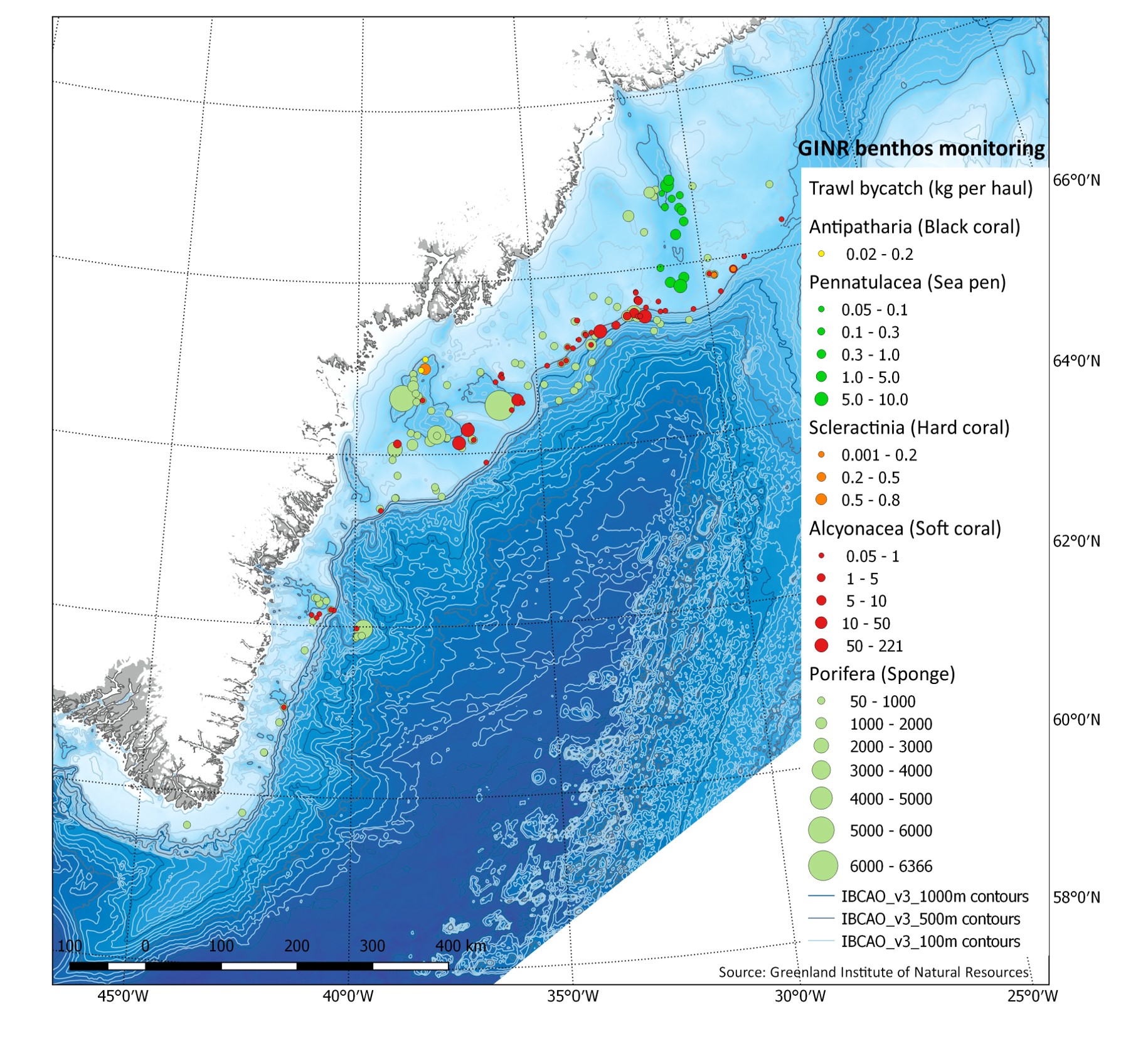The greatest physical disturbance of the seabed and benthic habitats is caused by mobile bottom-contacting fishing gear. Most demersal fisheries in the ecoregion are bottom-trawl fisheries. Figure 7 shows the effort by bottom trawlers in the recent decade (2010–2021) on the main targeted species. Mapping of benthic habitats is currently limited in the ecoregion. There is a high degree of overlap between the trawl fishery footprint for cod and demersal redfish, and the habitats of corals and sponges on the continental slope (Figure 8).

Figure 8: Overview of observations of corals and sponges collected as trawl bycatch on research surveys conducted by the Greenland Institute of Natural Resources (GINR) in East Greenland.

